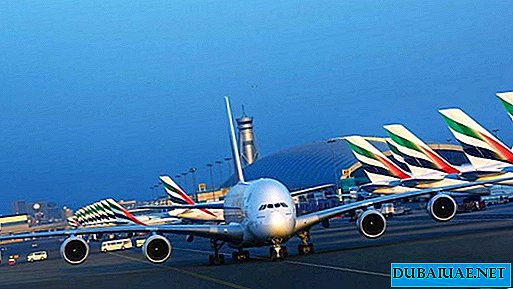Forest, fire and water ...
Until about 1000 AD e. a squirrel could, jumping from tree to tree, without touching the ground, get from Antwerp to Groningen or from Maastricht to Alkmaar.
Residents of the country drowned wood stoves and burned bonfires. They built houses and ships from timber, and made wooden shoe-klomkomps. Forests were destroyed mercilessly, and then a ban on logging was imposed. Ornamental wood could be exported from other countries, and as a fuel it was too expensive. Fortunately, in the Netherlands there were large deposits of peat. From it people learned how to make fuel.
Peat extracted by dredgers from the soil has a high calorie content. He was taken out of the water and dried on the ground. Many lakes arose in the Netherlands as a result of peat extraction.
From the plane, you can see the uncooked peatlands and lakes, which are declared national reserves. Some of them, such as Veerribben, De Grote Payle and Beesbos, became national parks.
Another characteristic feature of Holland is the conquest of the water element. A significant part of polders, or drained land, sometimes lies 6 meters below sea level. With the help of dams, mills and polder water regulation systems, the Dutch manage to keep the water level normal. Moreover, the part is using systems controlled by computers so that in case of drought or rain, the water level remains the same.
By the way, Holland is not only lowlands. At different times of the ice age, ice shafts from glacial flour and sand dunes arose on its territory. Therefore, some sections of the soil lie higher than neighboring areas where rivers penetrate through the swampy floodplains. The capital of Holland is not The Hague, where the government sits, but Amsterdam. And we, of course, began our acquaintance with the country from this beautiful city
Hello Amsterdam!
 Our journey began with arriving at Schiphol Airport, which serves as a starting point for traveling throughout Europe. This is the home port of the Dutch air fleet KLM, the first airline in the world to operate successfully for more than 75 years. Amsterdam Airport lies about 7 meters below the North Sea. Earlier the waves of Lake Harlemmer were foaming here. It was drained using dozens of windmills and the Crookyus steam pumping station, which is now a museum.
Our journey began with arriving at Schiphol Airport, which serves as a starting point for traveling throughout Europe. This is the home port of the Dutch air fleet KLM, the first airline in the world to operate successfully for more than 75 years. Amsterdam Airport lies about 7 meters below the North Sea. Earlier the waves of Lake Harlemmer were foaming here. It was drained using dozens of windmills and the Crookyus steam pumping station, which is now a museum.
Amsterdam is a completely amazing city, especially if you look at it from above. The city plan does not consist of numerous rectangles and quarters, as in many Dutch cities, but of the circles that form the belt of city embankments and canals.
The primary name Amsterdam comes from the Latin word "Amsterdamum". It arose in 1270 at the mouth of the Amstel River, which flowed towards Hey Bay, like a dam with locks. Amsterdam received city rights around 1300. A customs office was immediately established for importing beer from Hamburg, and quite quickly there was a busy transport connection with this city, trade with which was expanding.
Amsterdam has become a connecting trading link between Flanders and the Baltic Sea countries. Grain came from the Baltic countries, and already in the 15th century the city became a large grain storage in the northern part of the Netherlands and the largest trading center in the Netherlands. During the time of the artist Rembrandt, in the 17th century, Jewish quarters were located near Amsterdam. By the way, the house of Rembrandt himself was also in this part of the city. Jewish merchants who were very active in the Netherlands called Amsterdam "Mokim Grotto", which in Yiddish means "Big City".
The ever-changing Amsterdam is now one of the most comfortable cities in Western Europe, where life is in full swing 24 hours a day. The city center is a pedestrian zone surrounded by a ring of embankments, where everything is at hand and within walking distance.
Our closer acquaintance with the city began from the central station, where a harbor was created for the berth of pleasure boats that transport tourists through numerous channels. Amsterdam's spectacle from the water is unforgettable. Tourists get acquainted with its beautiful monuments, buildings and bridges located along the picturesque promenades. Enclosed boats are very comfortable, although quite low: they need to be able to freely pass under the countless bridges of this city on the water. If you stand on the bridge and watch the maneuvers of the boats, then you will be captivated by the contemplation of how close these boats are, never, fortunately, without colliding, thanks to the experienced helmsmen.
A characteristic feature of Amsterdam are floating homes and yachts. About three quarters of a century the city’s authorities worked on the construction of a new building in the Amsterdam municipality. While discussions were underway on this project, the need was ripe for the construction of a new Opera House. The large building constructed as a result, uniting these two important objects, received the name "Stopera". This building stands on stilts, the number of which is 3075, and the city is truly proud of this structure.
In the summer, in every corner of Amsterdam, life is raging, especially on open terraces, where the service staff is always friendly and you can hear all the languages of the world. Leiden Square or Leidsepjane is, in fact, the largest open cafe or terrace of the capital of Holland, but Rembrandt Square (Rembrandsilein) is slightly inferior to it in this.
Where else in the world can one find such a variety of facades as in Amsterdam? The "Golden Age" of Amsterdam architecture is the period of the economic heyday of Holland (1600-1700). During this period, Dutch merchants tried to outdo each other with the luxury and wealth of both the appearance and the decoration of their homes. This affected the variety of facades, among which you can find the most intricate and bizarre shapes. Facade slabs and special images that adorn each house tell their amazing stories about houses or their owners.
On quiet summer evenings, as soon as dusk falls and the whole movement calms down, Amsterdam takes on a special charm. Tens of thousands of lights illuminate the contours of bridges and buildings, reflected in the water of canals and rivers. Monuments and modern buildings are spotlighted, giving the city a futuristic look. The Red Light quarters have their own charm. Indigenous Amsterdam, descended from sailors and merchants, calmly relate to establishments located here.
The Hague
 Arriving in Holland and starting acquaintance with Amsterdam, we visited the city where parliamentary democracy reigns supreme - The Hague (the old name is from Gravenhage, which means "count hedge"). Queen Beatrix lives here, and here is her office. It seems that one of the monarch’s ancestors riding a horse guards her royal palace, which was formerly called the “Aude Hof” (“senior courtyard”).
Arriving in Holland and starting acquaintance with Amsterdam, we visited the city where parliamentary democracy reigns supreme - The Hague (the old name is from Gravenhage, which means "count hedge"). Queen Beatrix lives here, and here is her office. It seems that one of the monarch’s ancestors riding a horse guards her royal palace, which was formerly called the “Aude Hof” (“senior courtyard”).
In the summer, the Hague often organizes numerous events in which a variety of groups of people take part who want to attract the attention of the media. And in the fall, every year on the third Tuesday of September, the Queen of the Netherlands Beatrix opens the Parliament. Her Majesty arrives at the Parliament building in the Golden Carriage, which the inhabitants of Amsterdam once presented to the royal house of the Oran Dynasty. The splendor and magnificence of the procession of representatives of the ruling house attract many spectators - adherents of the monarchy.
The Palace of Peace (Fredespaleis) in The Hague is of great international importance. The rulers of many countries of the world have gathered many times in this building of the permanent Arbitration Court to discuss and resolve all kinds of conflicts that occur on the globe. Here are the International Court of Justice and the Academy of International Law.
The inhabitants of The Hague call their city "open" because important cultural events take place in it, business life is boiling here, and diplomatic relations between the countries are developing. The Hague is open to art; international congresses and exhibitions are regularly held there.
Rhine Mills
The image of Holland is mainly associated with mills, tulips, wooden shoes and national clothes. In fact, Holland is much larger and wider than the stereotypes mentioned.
The city of Rotterdam has been and remains the world's largest trading port and cargo transshipment point, thanks to its many harbors. Utrecht, located in the center of the country, is called the "treasure city", there are still many signs of the life of the rich Roman Empire. The largest city in the southern part of Holland is Eindhoven. There is the headquarters of the giant electronic equipment - the world famous company Philips. Especially different from all the other villages and cities of the islands of the province of Zealand, where the Dutch demonstrate the highest achievements in curbing the water element and the construction of mobile dams that block the sea. The province of Friesland, bordering the lake region, is a paradise for lovers of water sports.
A huge fleet of yachts, boats and motor boats that can be rented is available to every tourist. Holidays can be perfectly spent on the islands of Wadden Sea, and every year a huge number of travelers come from both Holland itself and from abroad. Of particular interest is the Kinderleika settlement. This place is listed by UNESCO as a specially protected monument of the past.
On the edge of the Albasservard region, near the mouth of the Rhine River, is this typical Dutch landscape, where 19 mills lined up in one row to drain the surrounding polder. Legend has it that during one flood, the cradle with the baby was washed away with water, but the cat kept it miraculously. The dam mills were built in 1740 and attract a huge number of visitors every year with cameras and video cameras in their hands.
European flower garden
Throughout the space from The Hague to Helder, beyond the dunes, there are endless fields of tulips or bulbous plantings. The most famous in this area are the villages of Liss and Hillegon with their world famous Keukenhof park.
At the beginning of our reckoning, this site consisted entirely of peat bogs and dunes at the mouth of the river, covered with sand. Since water from the river could not flow into the sea, favorable conditions for plant growth arose here, which contributed to the formation of peat deposits. This soil was ideal for growing bulb crops. On the south side of the city of Lissa are the powerful semicircular gates of Theis Dever. This is the only building of this style left to people from the Middle Ages. On the territory of Keukenhof near Liss, every spring a world famous flower exhibition takes place, which attracts visitors from all over the world.
Not far from Amsterdam is the town of Aalsmeer, which since 1850 has been famous for floriculture and crop production. The largest flower auction in the world is also located there. This is a modern complex, equipped with the latest technology. The most advanced logistics system provides incredibly fast operations for the sale, transportation and delivery of flowers anywhere in the world. A bouquet of flowers offered for sale at an auction in Aalsmeer, on the same day, you can buy, for example, in Tokyo or in New York. The auction is a cooperative enterprise, which has 3,000 members - floriculture firms and organizations. Every year, the auction organizes a national exhibition for flower growers (National Blumen Factentostelling), the purpose of which is to demonstrate the products of different countries and identify the main trends in floriculture. This exhibition is the most important event for flower growers around the world. In Alsmere there are also laboratories for checking the quality of plants and a school of horticulture and floriculture.
Harbor, Masts and Cheeses
In the city of Rotterdam, various exhibitions of various kinds are also constantly organized. A vivid impression was a visit to the Euromast, 185 meters high, located in the port of Rotterdam, in the middle of which there is a restaurant with a magnificent view of the city and all the harbors of this world's largest port facility. The Euromast was built in 1960, and in 1970 the Space Tower was built. Today, both of them are the most important attractions of the city.
In addition, Rotterdam is the largest center of modern architecture. Cubic-shaped houses were built here by architect Pete Blom. Beautiful and cable-stayed bridge Erasmus, which is popularly called the "Swan". Modern skyscrapers, which reflect the old buildings of the city, adorn the embankment and Palace Square. It is worth noting that back in 1898, Rotterdam was known in the world, thanks to its huge port of high technical equipment. Then the White House was built. This building, 45 meters high, was the tallest in Europe.
In 1963, the Port of Rotterdam became Europort - a real gateway to Europe, taking first place in the world in quality and scope of work. This was facilitated by a huge reconstruction and powerful construction to expand it.
There is another attraction on the banks of the Gauve River (or Gaude): in the 17th century there was a large fish market - a real "fish temple". There are several concepts that are today defined by the adjective "gaud." This is a delicious high-fat Gaudi cheese, white stone smoking pipes, the famous Gaud faience and, of course, Gaudi candles. A monument of Dutch architecture is the famous Gaud town hall in the late Gothic style, lined with natural stone on the outside. The building resembles a fairytale castle, elegant, airy and magnificent at the same time. Currently, marriages are being made in the former office of the Governor of the Town Hall. This room is decorated with carpet wallpaper and the image of the Virgin - the patroness of Gauda.
The city of Edam is also known for its "Edam" cheese far beyond the borders of Holland. Today this cheese is made not only in Edam, but throughout Holland. Cheese "40ё Edamer" usually weighs 1.7-2 kg. It is made in the form of a round head and is well cut. Taste is defined by connoisseurs as "spicy and fresh."
Since ancient times, the city of Alkmaar has been known for its trade, educational institutions, transport offices and hospitals. A large cheese market in the area around the Weight Chamber is held every Friday in the morning from April to October. This market is world famous and is designed mainly for tourists. In the city you can also cruise along the canals on a water tram. By water you can walk past charming courtyards and elegant merchant houses. Big Church C Laurensa is a unique example of Brabant Gothic in Holland.
The most interesting sights of the country are in Leiden.Leiden Fortress is a great example of a medieval castle. It is built on an artificial hill. Next to it is the Tisian Library, named for the Dutch lawyer Johann Tisius, who bequeathed his Academy library. In Leiden is the famous Latin school, built in 1431. In the past, many great scientists worked in this city. For example, the famous specialist in languages, Josephus Julius Scaliger, known as the founder of comparative linguistics. He was fluent in French, German, Italian, Greek, Arabic, Hebrew, Armenian, Syriac, Persian, Turkish and knew Latin. In the Piterkerk church there is a monument on the grave of the doctor Herman Burhava with an epitaph. This indicates that Leiden honored his scientists, and Mr. Burhave was not only an outstanding doctor, but also a theologian, philosopher and mathematician. Behind the Academy, its main building, is the Botanical Garden - Hortus Botanicus, which was founded during the founding of the University of Leiden.
Cities and villages
As for the national clothes, the village of Staphorst, as well as the villages of Marken and Volendam are especially famous for it. Although the local youth, going to a disco, prefers more modern clothes.
Agriculture in the Netherlands, including livestock, is one of the most advanced in the world. The overproduction of milk and pork in the country forces farmers to find alternative solutions. So, for example, more and more rural residents are beginning to engage in the breeding of eels and catfish. Or they switch to the production of local agricultural products by methods in compliance with the environmental requirements of environmental protection.
Many Dutch residents and tourists from around the world prefer to spend their free time in Zandvoort. The train stops almost on the beach, and among the dunes there are bicycle and pedestrian paths. The well-maintained center of Zadworth attracts with its countless café-terraces. In addition, there are many cultural and entertainment venues. The famous casino by the sea enjoys particular success. Through Zandvoort runs the road racing competitions.
This small country is inhabited by numerous groups of people who differ in customs and character. So, the inhabitants of the western regions are more open; the inhabitants of Friesland and Gromingham are more reserved, but thaw after a friendly conversation, and the inhabitants of the southern provinces love holidays. A distinguishing feature of the Dutch is their knowledge of foreign languages.
They say: "Our country is so small that we cannot expect from other nations that they will learn Dutch. Therefore, we try to learn foreign languages ourselves." One old Dutch minister once said: "The Dutch speak different languages, because the whole foreign country is with us."
Holiday every day!
Traveling to Holland is a holiday in itself. Well, if you are lucky enough to get to a carnival, festival or parade, then the event will be so significant that there will be enough impressions for the rest of your life. I was lucky because my trip coincided with Queen's Day - it is a national holiday of unity and solidarity. The Dutch put on that day the orange color of the Orange Dynasty, and set up a “free bazaar" where everyone can sell and buy any product right on the street.
Holland is one of the few countries where national customs have been preserved. Very often on the streets you can find an organ grinder playing for passers-by. And it would not be an exaggeration to say that Holland is a country of cyclists. In any weather, everyone rides bicycles here - both workers and members of the royal family.
Unique in its significance is the country's largest national park - De Hogu Veluwe. It is known as one of the largest sculpture museums in Europe in Otterlo - it is more than 20 hectares of open-air masterpieces of famous masters of the twentieth century.
Returning to Amsterdam, we visited the Rijksmuseum, where the masterpieces of the great Rembrandt are collected. Nearby is the Van Gogh Museum. We also made time to visit the diamond museum and the diamond factory. After the inspection, the guides offer tourists to buy diamonds cut here - without taxes and with all kinds of discounts.
With great pleasure we got acquainted with the national cuisine of Holland, visiting many cozy restaurants. Traditional cuisine is famous for its "rustic" solidity, extensive use of local products and excellent traditions in the preparation of seafood. The most typical dish - "hotiot" is a tender boiled meat with vegetable puree. Pork legs and beans with cracklings are also served here.
It is impossible to imagine Dutch cuisine without sandwiches of all kinds. The most famous of them is a hot three-layer sandwich with fried eggs, bacon and ham, as well as a Rotterdam sandwich with lard and tomatoes.
Of the alcoholic drinks, the Dutch prefer beer and the famous Orange Bitter liquor. And the Dutch also make the most delicious gingerbread in the world. Gingerbread cookies are perfect for coffee that the Dutch drink all day.
And yet, Holland's “calling card” is plantations of flowers. Leaving Amsterdam, we visited the largest flower market and bought many different flowers that perfectly took root and settled in the Emirates. Together with them we took away with us a particle of joy and soul, impressions and memories of this amazing country. Saying goodbye to her, we decided to visit the no less attractive country located nearby. It is about Belgium, with whom we want to get to know each other better, find out its history and tell you. Therefore, see you soon!







